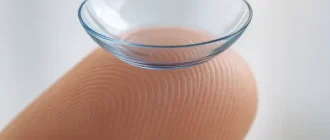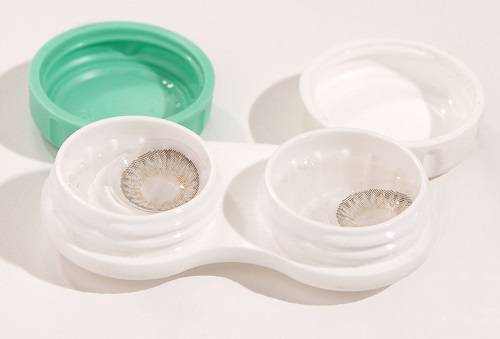Imagine driving at night, and every headlight is a blinding glare; or staring at a screen all day and battling headaches from harsh reflections. Many people don’t realize that the solution may be as simple as adding an anti-glare coating to their glasses. Anti-reflective (AR) coatings have come a long way, evolving from an optional luxury to a practical necessity for the modern eyeglass wearer.
The Rising Popularity of Anti-Reflective Coatings
Statistics speak volumes. In the past decade, the adoption of anti-glare coatings has grown rapidly, with nearly 70% of eyeglass wearers in the U.S. opting for this feature. In Europe, that figure reaches 85%, reflecting a strong preference for comfort and visual clarity. Why this increase? Because AR coatings do more than just reduce glare—they also reduce the strain on your eyes, which is becoming increasingly important as people spend more time on digital screens.
Digital Eye Strain is a growing problem. The Vision Council has found that over 60% of adults experience symptoms of digital eye strain, such as headaches, blurred vision, and general eye fatigue, often worsened by screen reflections. AR coatings are a crucial part of combating these symptoms, especially in our screen-centric lifestyles.
How Does Anti-Glare Work, Exactly?
An AR coating is a thin, transparent layer applied to both sides of the lenses. This coating is engineered to allow 99.5% of light to pass through, while eliminating the harsh reflections that can make vision uncomfortable. Without the coating, approximately 8% of light is reflected off traditional lenses, which may not sound like much, but when it involves the intense glare of sunlight or the headlights of an oncoming car, it makes a world of difference.
AR coatings are particularly effective for anyone who spends a significant amount of time in environments with intense light—such as nighttime drivers, students, and office workers.
Modern Trends and Technology Behind AR Coatings
Recent advancements have made anti-reflective coatings not only more durable but also more effective. Companies are developing coatings that feature hydrophobic and oleophobic properties, which means they repel water, smudges, and dust. In practice, this makes maintaining your glasses easier and your vision clearer. Think about fewer fingerprint marks and easier cleaning.
There is also a rising trend of blue light filtering integrated with anti-glare coatings. Blue light filters help reduce the impact of high-energy blue light, emitted by digital devices, that can disrupt sleep patterns and contribute to eye strain. A 2023 survey by the American Optometric Association found that 40% of consumers now prefer glasses that offer both AR and blue light protection—an increase from just 20% five years ago.
Does It Really Make a Difference?
For some, anti-glare coatings might seem like an upsell, but ophthalmologists see it differently. Dr. Robert Hayes, an optometrist practicing in New York, states, “One of the most common reasons for headaches is uncorrected or poorly corrected vision—AR coatings can eliminate a lot of those headaches.” He points out that a significant number of his patients, especially those working in front of screens, report immediate relief once they begin using glasses with anti-glare.
A common medical situation relates to post-cataract surgery. After surgery, patients often become more sensitive to light. Dr. Hayes notes that “many post-op patients find anti-glare coatings invaluable in reducing discomfort during recovery,” especially when facing bright indoor and outdoor light sources.
The Cost Consideration
It’s true that anti-glare coatings add to the overall cost of eyeglasses—typically around $50 to $150 per pair. But when considering the benefits, the cost starts to seem like a worthwhile investment. Think about it: clearer night driving, better screen time comfort, fewer headaches, and a more attractive look (no more reflections in selfies or on video calls).
Fun Fact: If you wear glasses without an anti-glare coating, your eyes are often hidden behind white glare when photos are taken with a flash. AR coatings help others see your eyes more clearly—a small but appreciated benefit for anyone who frequently finds themselves in front of a camera.
Our Editorial Take: Should You Get Anti-Reflective Coatings?
At the end of the day, an anti-glare coating is not just an extra feature for your glasses; it’s a practical enhancement that significantly improves quality of life. Whether it’s for safer driving, comfortable working hours, or reducing eye strain, we wholeheartedly recommend adding an anti-reflective coating to your glasses.
While it might seem like an additional cost, consider the true price of eye comfort. More comfort means fewer headaches, improved productivity, and overall better health. In our book, that’s worth every penny.





